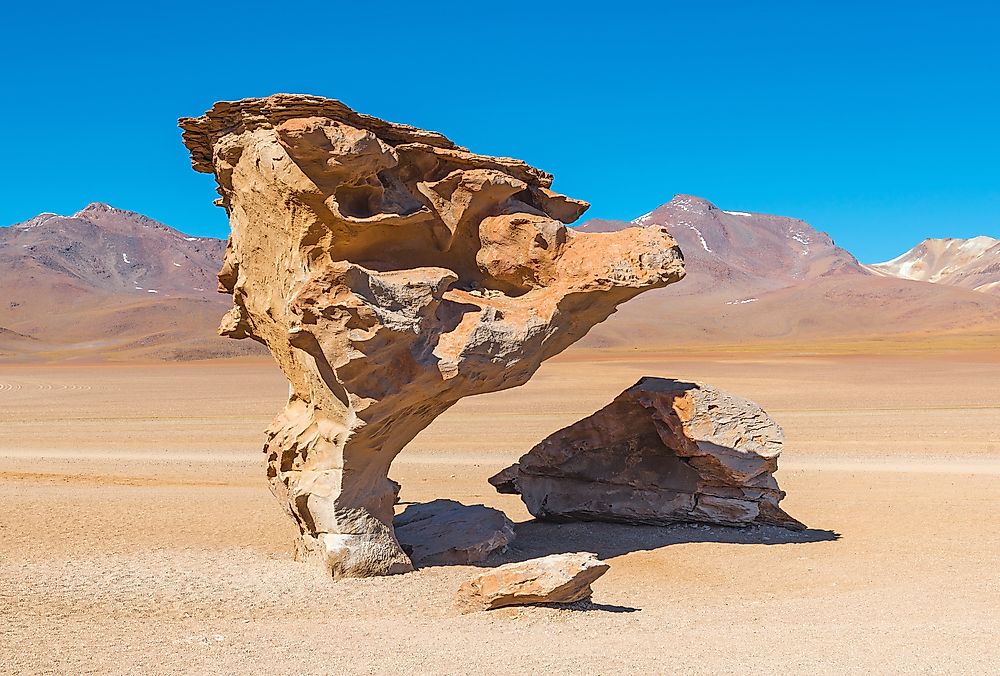What Type Of Climate Does Bolivia Have?

Bolivia is a landlocked nation located in central South America. Its neighboring countries are Paraguay, Chile, Argentina, Peru, and Brazil. Covering 424,164 square miles of land area, Bolivia had an estimated population of 11,307,000 as of 2018.
Bolivia is a highland county with one-third of its region lying on the Andes Mountains. It consists of humid jungles, balmy lake sides, semi-arid highlands, and temperate valleys with the climate varying depending on the topography and altitude of each region. During the heavy rain season, the country may experience landslides in areas that have close proximity to the mountains. It becomes extremely cold in the night. Despite the country having varying climatic conditions, it enjoys two distinct seasons: the dry season (winter) and rainy season (summer).
The Winter (Dry) Season
Bolivia’s winter season starts from May to October. It is characterized by slightly shorter as well as sunny days. The nights, especially from June-July, are colder than the rest of the year. The highlands experience frigid nights while the lowlands have a more pleasant temperature that is less humid. Cold fronts that originate from Patagonia in May and August sweep the country leading to plummeting of the country’s temperatures. Amazon also experiences this sudden decrease in temperatures. The Bolivian farmers utilize the dry season to clear overgrown trees found in the forests.
The Rainy (Summer) Season
Bolivia’s rainy season starts from November to March. It is characterized by a humid and warm climate in the eastern part of the country. The southern areas have a mild climate whereas the western part is dry. The lowlands experience heavy rains that cause floods. The area becomes muddy with the floods resulting in increased humidity, heat and mosquitoes. However, the highlands experience minimal rain causing the days to become cloudy. The rains make the countryside look green and facilitate the growth of native flowers and plants.
The Llanos (Tropical Lowlands)
The provinces located within the lowlands of Bolivia are Cobija, Rurrenabaque, Santa Cruz and Trinidad. The prevalent climate in these regions is a humid and tropical climate. The LIanos regions experience the hottest month in December and January. Between late September and May, the tropical lowlands receive heavy rains caused by winds blowing from the Amazon rain forest. Its average annual rainfall is 1,000-4,000 mm. Bolivia’s tropical lowlands also have summer days that are sticky and humid as well as musky and warm in the night. Additionally, the nightfall has a moist and fruity aroma caused by the wind carrying the tropical jungle scents to the cities. The month of August is windy. It is also the month of “slash and burns” which is a northern Bolivia land-clearing slogan for clearing the overgrown forest areas. The wind blows the resultant thick smoke to the southern direction reaching cities like Santa Cruz. This smoke is so thick that at times it causes visibility and driving problems with some people suffering from various respiratory problems. The average temperature in the tropical lowlands is 86˚F.
The Altiplano (Highlands)
The Bolivian highlands include the districts of La Paz, Sucre, Oruro, Lake Titicaca, Potosi, and Uyuni. The climate in these areas is humid, cool, and semi-arid. The average temperature experienced in these regions is from 60˚F-80˚F. In June and July, the south-western parts of the Altiplano region have the coldest temperatures. The Altiplano winds are harsh and cold, forcing inhabitants of the region to use moisturizers on their skin to prevent the skin from windburn. Sometimes, the Altiplano highlands may experience snow between April and September. The rest of the year is typically sunny and dry with temperatures dropping to slightly above 32˚F (0˚C) resulting in chilly nights. From December to March, the highland regions receive an average rainfall of 200-800mm Areas around Lake Titicaca in the northern highlands have bright sunshine during the winters with temperatures rising to 70˚F. The heat from the sun is so strong that people apply sunscreen throughout the day.
The Amazonian Lowlands (Yungas Valley)
The Yungas valley covers Bolivia’s Sorata, Coroico and Chulumani regions. It experiences refreshing moist air as well as a humid and warm climate. The annual mean temperatures in the valley range between 60.8˚F and 68°F. Areas with altitudes above 6,500 feet experience snow. Rainfall occurs throughout the year, but December and February experience the most torrential rain.Annual rainfall recorded is from 1,000-1,800 mm. The southern parts of the Amazonian highlands tend to be drier than the northern parts.











